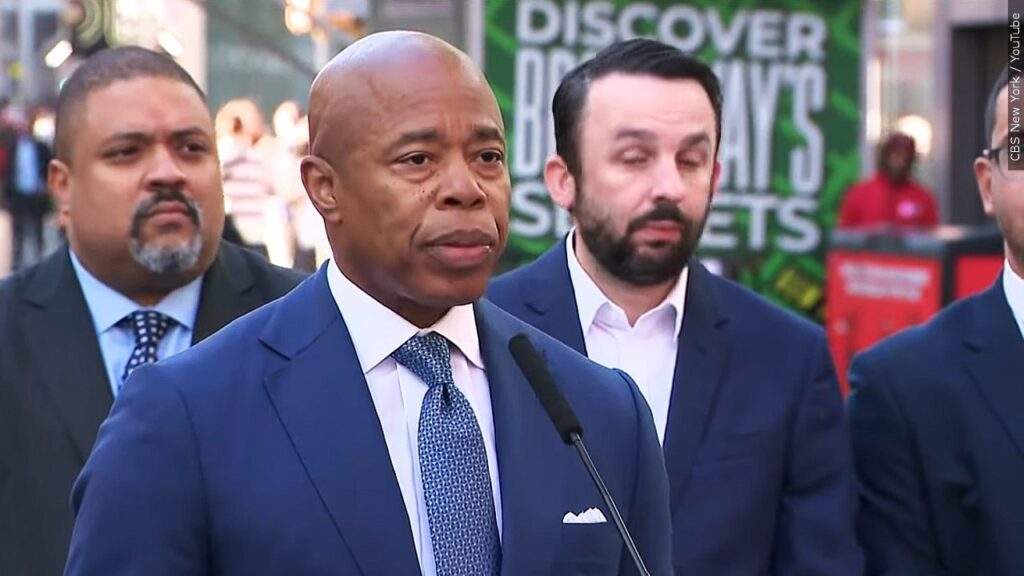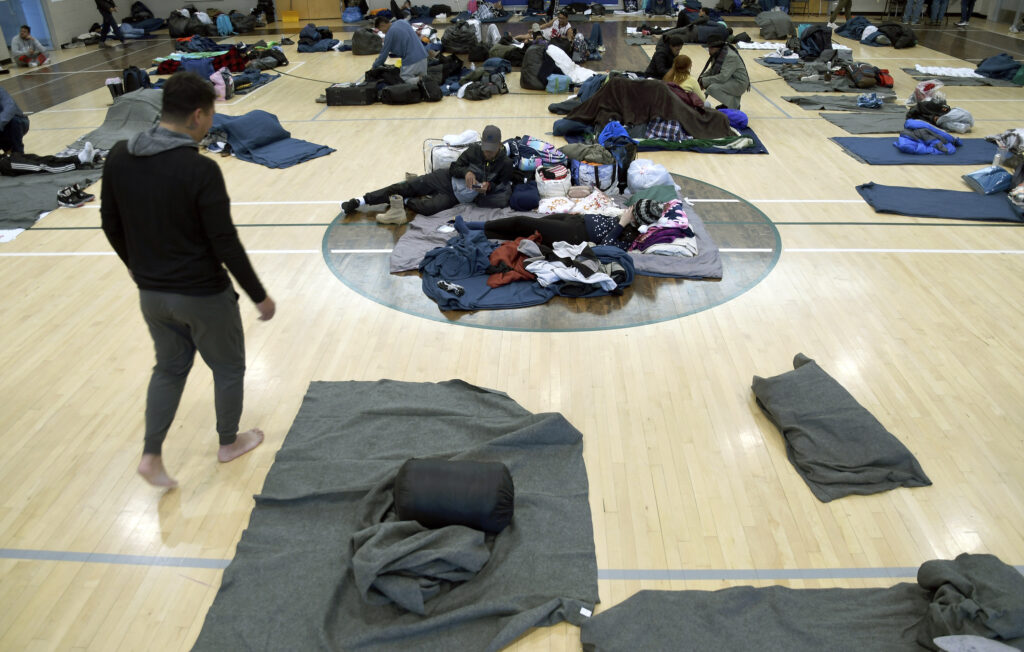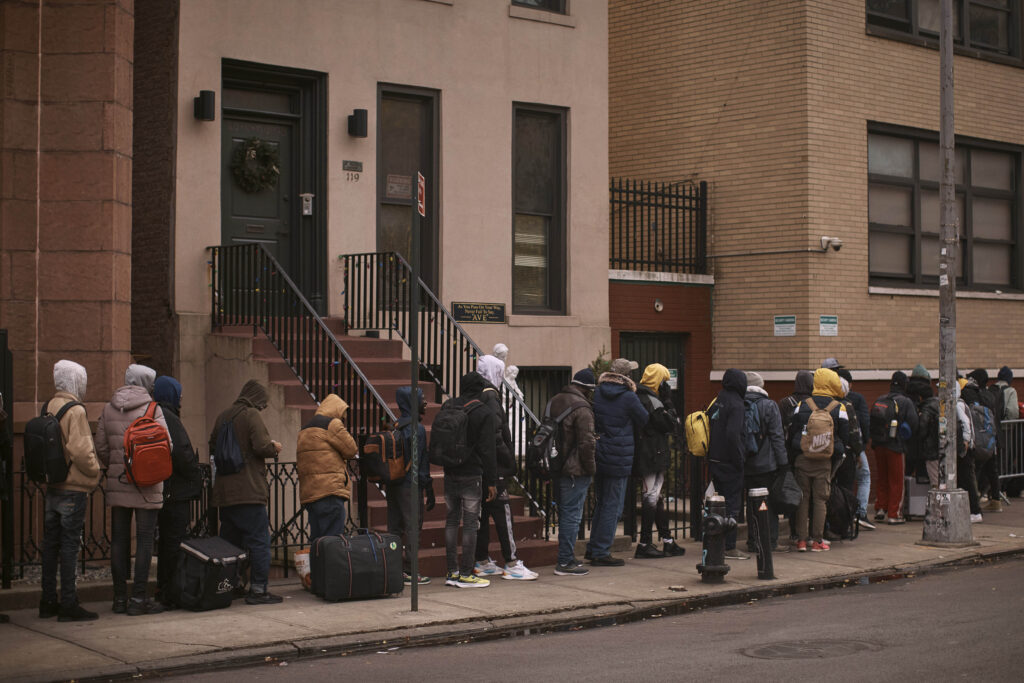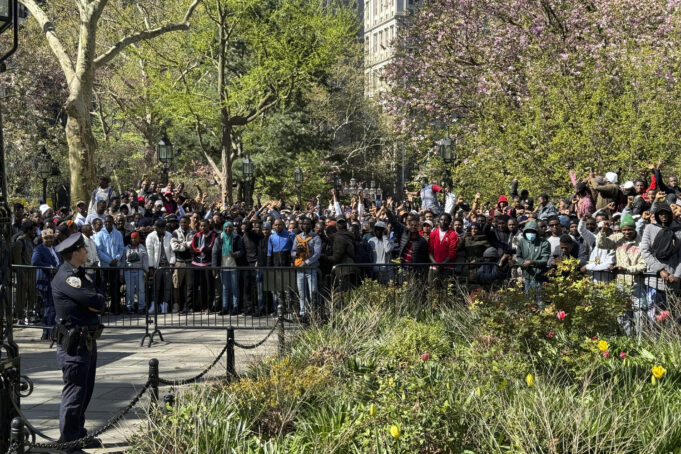by Nayaba Arinde
NEW YORK—“An entire city was dropped on our city, and everyone there can’t work,” New York City Mayor Eric Adams opined when the number of mostly Latino and a lesser number of West African migrants and asylum-seekers stood at 180,000 last year. While over half have since left, according to the city, the number today is more like 68,000
For almost two years now American key cities like Chicago, Denver, and New York have been experiencing the migrant crisis influx of tens of thousands of people. Despite the commonly reported narrative, migrants are also coming from places like China, and Russia, as well as South America, and Africa.
As New York City neighborhoods got used to thousands of mostly Latino and West African migrants, curiosity, and welcomes, have turned to some vocalizing concerns about the billion-dollar expenses, and drain on resources and services. Or it could just be plain old racism.
“The migrant crisis has been created by America’s capitalist and imperialist foreign policy that exploits countries like Venezuela, Guatemala, and Nicaragua, and supports dictators so that their people are running here,” said Charles Barron, former Brooklyn Assemblyman and City Councilman, and co-founder of Operation Power.
“This is the result of America’s policies backfiring. Then there are their exploitative policies here that have us living in domestic colonies, forcing us into shelters or living on the subway, or in the streets.

New York City has been accused of “pitting of the poor against the poorest,” by community activist A.T. Michell.
It’s a fluid situation, with repurposed buildings, and hotels converted into shelters, constructed tent cities, cards loaded with money given to some migrants, and accompanying protests.
The federal government has given Venezuelan migrants Temporary Protected Status, but the migrants from West Africa do not get that status. While the Venezuelan and other TPS holders can work “legally,” some of the West African migrants and asylum-seekers have filed for asylum, but there is a hefty financial cost, so many others have not.
They are doing some delivery jobs, and selling merchandise like hats and ear pods, off-the-books work. Many of the men are Muslims, and they are sleeping in mosques and shelters.
On April 16, the Committee on Immigration, chaired by Councilmember Alexa Avilés, and the Committee on Hospitals, chaired by Councilmember Mercedes Narcisse held an oversight hearing on “The Experiences of Black Migrants in New York City.”

Hundreds lined up to get into the chamber, and the 1,000 or so who could not, held an impromptu rally in City Hall Park.
Those who gave testimony in City Hall included representatives from the Mayor’s Office of Immigrant Affairs (MOIA), Office of Asylum Seeker operations, and advocacy organizations such as: Afrikana, UndocuBlack Network, African Communities Together (ACT), African Services Committee, and Haitian American United for Progress.
The city stated that from 2022 and 2023 fiscal years, the number of African migrants crossing the southern border rose from 13,406 to 58,462 people, with the largest share of Black immigrants originating from nations in the Caribbean region such as Jamaica, Haiti, Trinidad and Tobago.
From last December 2023, New York was assisting 68,000 migrants in percentage order: Venezuela, Ecuador, Colombia, then Senegal, Guinean, and Mauritanian migrants.
The testimony at the hearing revealed a number of concerning issues.
In February of 2024, New York Focus released numbers that showed that notices to vacate shelters were disproportionately served to migrants from Mauritania and Senegal. Of the 14,000 notices to vacate that were included in this analysis, 44 percent were served to Mauritanian migrants, and 32 percent were served to Senegalese migrants.
While so many new arrivals speak Fulani, Pulaar, and Wolof, the city says that it is hard to get staff trained in these languages. NYC Mayor’s Office of Immigrant Affairs Commissioner Manuel Castro offered that the federal government has to do better, as migrant and asylum-seeker advocates also call on the federal government to send funds to New York. Governor Kathy Hochul said in January that she would designate $2.4 billion for the city for fiscal year 2025.

Harlem’s 116th Street area has traditionally been called Little Senegal or Little Africa, and it is where hundreds of mostly young West African men have migrated. State Senator Cordell Cleare submitted testimony to the hearing saying in part, “The migrant situation in Harlem is different from other areas of the City.
We have primarily young men from West African countries, who have different food, language, religious, and cultural needs … in my district, these African migrants are the absolute mainstream.
We have held numerous community events, coat drives, and giveaways, as well as the all-important task of feeding thousands of these asylum seekers and connecting them to groups and organizations that can help them get support for all aspects of daily living.
I have repeatedly [called on] President Joe Biden, Majority Leader Charles Schumer, Governor Kathy Hochul, and Mayor Eric Adams to provide TPS for our African Asylum Seekers, to fund food, housing, and language programs, primarily administered by Mosques, to ensure that language and education services are offered in French and African Dialects.”
Nation of Islam Eastern Regional Student Minster and Student Minister of NYC’s Muhammad Mosque No. 7 said, “We need to organize the Black grassroots like the churches, and other organizations.
We need to communicate with the second and third-generation immigrants who speak both languages, French, and English, and have them articulate the needs of the people. They need to be the conduits so that we can help them so that they are not solely dependent on what the government gives them.”
Founder of the African Bureau of Immigration and Social Affairs, Chicago-based Dr. Seydi Sarr told The Final Call, “We don’t have an immigration problem, we have a hospitality problem. America decides who they want to be hospitable with.
You can see when and how they apply the rule. When they say that 90 percent of the African migrants are single men, and some percent of the Venezuelans are families—so when you apply your 30-day [shelter] rule, you can say it was targeting single men, not Africans.”
Public Advocate Jumaane Williams told The Final Call that traditional “anti-Blackness” behavior and methodology is continuing with the treatment of the new Black arrivals. “It’s usually left out of the story.
Their needs are not being lifted up in the same way. It is very concerning. Many of us have been talking about it for the last two years. But, it fell on deaf ears. Now the policies are hitting them the hardest.”
Dr. Sarr said, “The issues in Chicago are very similar to those in New York. Chicago does not have the right to shelter. New York does. But, the migrants are flocking into the cities.
The cities are not prepared for that level of people coming in. The cities are already overwhelmed by other issues, and you have people who say ‘Why are you helping the newcomers when we have been here suffering all this time?’
This is why we tell the administration to be careful with the rhetoric that they use because it ends up pitting communities against each other. So now instead of pushing against the system to make change—they are fighting each other.”
Exonerated Five member and Harlem’s newest City Councilmember Yusef Salaam told The Final Call, “There is so much work that needs to be done in order to ensure that this city welcomes our increasing migrant population in a concrete and equitable way.
I am proud of the first steps that the City Council has taken in launching the New Arrivals Strategy Team which will help improve our city’s current response efforts, with a proactive and collaborative approach that will prioritize providing resources and solutions, in a culturally competent manner, to address plight of our newest neighbors across all five boroughs.”
Ndeye Maram NGom a Bronx-born first-generation Senegalese American Cross-Cultural Consultant told The Final Call, “In the bustling metropolis of New York City, African migrants navigate a landscape marked by persistent disparities.
They often find themselves marginalized, facing significant challenges exacerbated by a lack of cultural competence and language access. From bureaucratic hurdles to limited access to essential services, African migrants encounter systemic barriers that impede their integration and success.
The absence of tailored support and understanding exacerbates feelings of isolation and exclusion, hindering their ability to fully engage with and contribute to the rich tapestry of New York’s multicultural fabric.
As the city prides itself on its diversity, it is imperative to address these shortcomings, fostering an environment where every resident, regardless of origin, enjoys equitable opportunities and respect.”
As for the hundreds who came to City Hall, Dr. Sarr said, “I thanked them for showing up because usually, our community is shy to show up because of enforcement and other things. So for them to show up en masse is big. We let them know that this is what advocacy looks like when you are fighting for your rights.”
Nayaba Arinde is an Editor-at-Large, award-winning reporter and activist. Follow her on Instagram @NayabaArinde1












